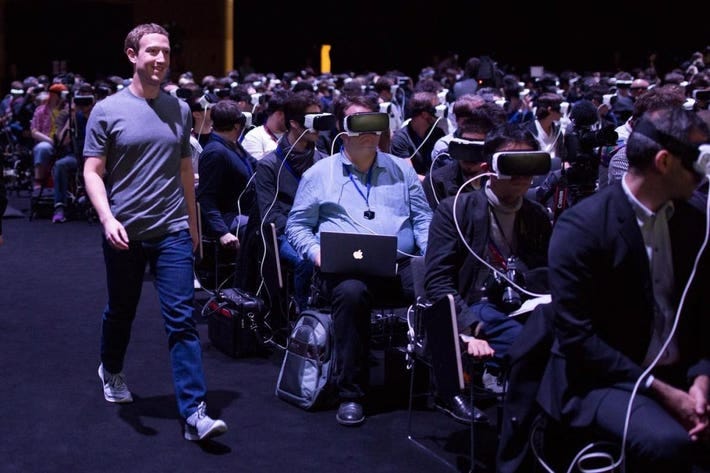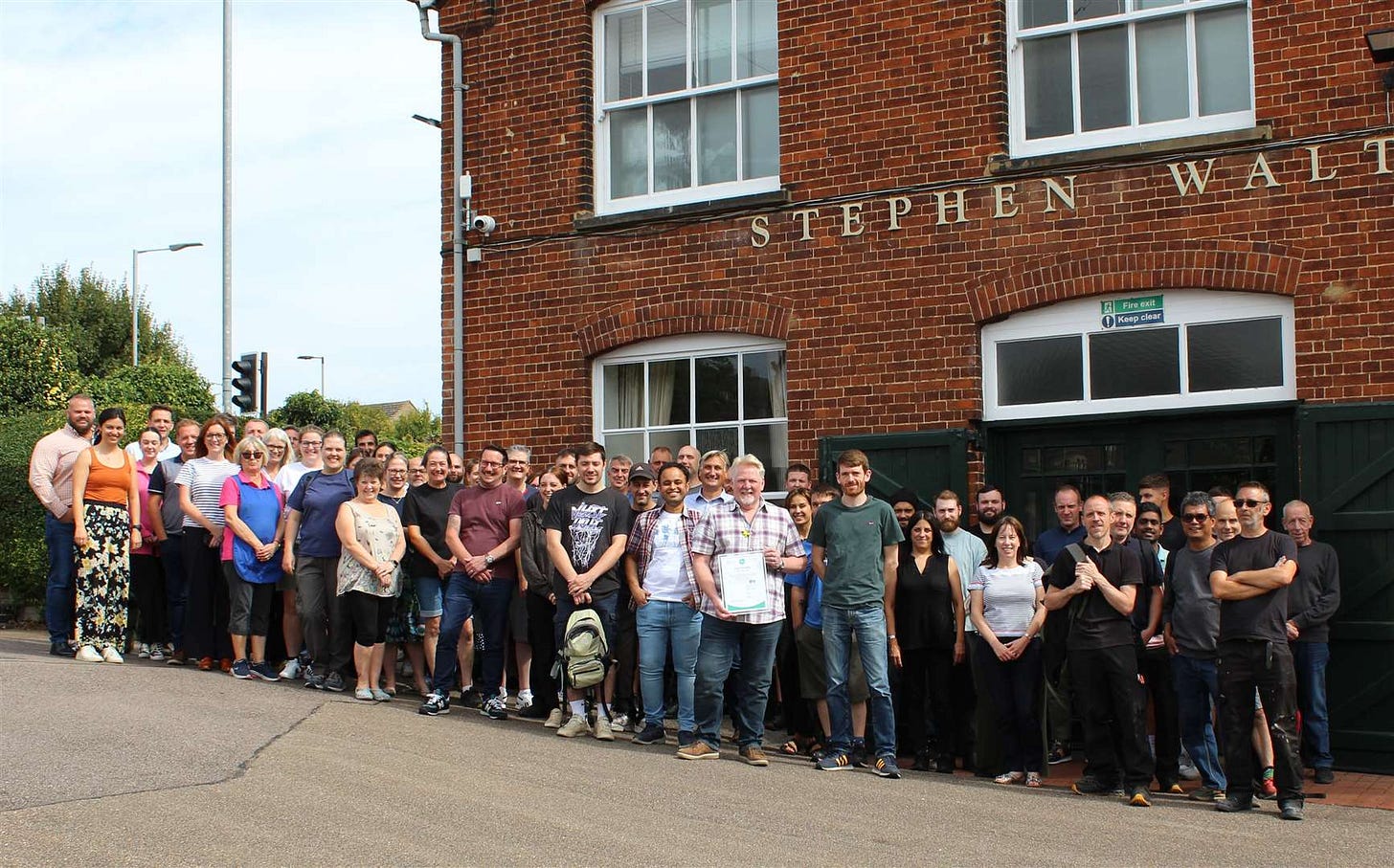#2 The Lore of Nation of Artisans
Behind the Nation of Artisans lurks an existential and cultural psychodrama.
In this week’s post, I explain why I’m actually doing this. The TL;DR is: (1) I’m searching for transcendence beyond the realm of the email job and (2) after years of moaning about technology, culture, and Britain in UnHerd, I thought it was high time to actually do something and turn theory into practice.
The Lore
My decision to launch Nation of Artisans starts with a personal and philosophical psychodrama.
On a basic level, I’m chasing the seductive dream of adventure. I want an excuse to explore Britain, history, and culture. I want to make stuff and connect with others. Of course, I also wouldn’t mind becoming a tycoon gentleman-industrialist—a 21st-century successor to Josiah Wedgwood, with the soulfulness of William Morris.
Yet there’s a deeper existential layer to Nation of Artisans.
It’s also a personal project aimed at transcending the atomised humdrum of the contemporary email-job lifestyle.
For the past four years, I have had the privilege to work in a delightful and curious Finnish firm dedicated to decoding the human truths that shape culture, technology, and commerce.
I have worked on thrilling and bizarre projects. I’ve designed saunas in Finland, broken bread with mad games designers in San Francisco, lived in the metaverse in Tokyo, imagined the future of religious life in California, and even shadowed billionaire playboys across the Middle East.
While it is fantastic fun, I am now in my late 20s, staring forward at a future lived through PowerPoint, Zoom, and Slack.
For some time, I have longed to forge something new. To see its tangible impact on the world.
Initially, I fed that desire by writing a few essays in UnHerd.
Yet pseud-journalists have hitherto only interpreted the world in various ways; the point is to change it.
To do so, Nation of Artisans attempts to resolve four tensions I have written extensively about:
The good life in a flat world: What does the good life look like in an economically stagnant and culturally depleted world? (link)
The numbness of technology: How do we escape technology’s numbing of our reality? (link)
Britain & Britishness after the culture war: What is an aspirational vision of Britain after the culture war? (link)
Economic & spiritual growth policy: How do we build an economy that balances material progress and spiritual nourishment? (link)
I will explain how it all fits together.
1. The good life in a flat world
In 2023, a team of anthropologists and I set out to take the pulse of the so-called “creative class” — two decades into their cultural supremacy.
We dove deep into the Global Shoreditch-Brooklyn-Kreuzberg bubble. We spoke with designers, tech founders, VCs, marketers, chefs, and artists — every “creative” we could find.
We sensed something was shifting.
These Bobos — “Bohemian Bourgeoisie” as David Brooks calls them — were losing their bougieness.
Their economic model was crumbling. The city dream was over. Many were packing up, abandoning urban life, and gentrifying pastures new—the exurbs, countryside, and villages.
Yet beyond their downward mobility, something deeper was happening: the cultural and spiritual foundations of Boboism were collapsing.
In its place, we found an emerging counter-cultural conservatism — one that rejected the hype and sleek minimalism of their Soho House forefathers in favour of something more rooted, soulful, and actually communal.
And so, I coined the term “Bohemian Peasant” — or Bopea — to describe this emerging subculture — the successors to the Hippies, Yuppies, and Bobos.
First published in UnHerd, the term took on a life of its own. It got traction, made its way into The Times and Tatler, and even earned me a place in Private Eye’s notorious Pseuds Corner — a badge of honour.
You can question the conceptual validity of the Bopeas (many loathe it!) Nevertheless, I found their quest for harmony and rootedness striking.
These Bopeas were building entirely new communities, often around ancient, wholesome practices. They are the revivers of sauna, fermenting, fine woodworking, wild swimming, baking, beekeeping — and even organised religion.
Bopeaism is diverse, but what unites them is resistance — against the onslaught of the Machine, Dopamine Culture and the economic and spiritual precarity of the Bobo lifestyle.
So awed by their deep passion for soulful exploration, community, true artisanship, and history, I too started to feel the pull.
Nation of Artisans is my attempt at embracing the spirit of the Bopea.
2. The numbness of technology
Like the Bopeas, I, too, worry about the relentless march of The Machine.
I recognise the importance of technological and industrial progress, but I can’t shake the constant angst over what it’s doing to us. The erosion of attention spans. The devaluation of skill by automation. The tyranny of constant surveillance. The mood-warping effects of recommendation algorithms that prey on our worst instincts.
In The Curse of the Scrolletariat, I explored the mind-altering effects of technologies that collapse space and time — the way they compress experience, flatten culture, and sever us from the tangible world.
Drawing on the work of French architect and philosopher Paul Virilio, I mourned the acceleration, algorithmic flattening, and rationalization of life itself.
“The speed of light does not merely transform the world. It becomes the world. Globalization is the speed of light.” — Paul Virilio
In an age where video and generative AI metastasise into every element of life, I fear we are no longer being in the world. We are merely corn-fed TikTok lemmings, amusing ourselves to death.
I’m aware of the irony: resisting The Machine live on Substack and social media.
Yet, I can’t put the genie back in the bottle.
Nation of Artisans is neither a normie millennial nor reactionary Heideggerian quest for pre-Internet “authenticity”.
Rather, it’s an attempt to forge a new harmony between media and matter, between technology and craft — for me, and for anyone else who wants to follow along.
3. Britain & Britishness after the culture war
Having come to political consciousness just as Britain started to tear itself apart in 2015, the paradox of Britishness lurks in my mind.
The child of a cocktail of immigrant ancestry, I’ve always been struck by the flexibility of Britishness. My parents raised me with contradictory narratives: to my dad, it’s cricket; to my mum, it’s Vivienne Westwood.
I am constantly struck by the nation’s ability to find harmony in wildly at-odds ideals — the aristocratic and the punk, the twee and the maverick.
Obsessed by these tensions, I wrote a tongue-and-cheek review of Burberry’s 2023 rebrand and Tara Isabella Burton’s Self-Made, entitled How To Make Britain Cool Again.
Now, this is not to say that Nation of Artisans is some hubristic nation building project (or maybe it is).
Rather, in what is a somewhat experimental branding strategy, I’m going to go deeper and attempt to synthesise a new discourse and narrative of Britishness. This may trigger a fun productive dialogue; this may also be profoundly stupid. Perhaps we will imagine a new Britain that Gen Z will die for!
Prepare yourselves for a future article on Britain, its many mythologies, and how it will shape Nation of Artisans’ visual identity and branding.
4. Economic & spiritual growth policy
Across the political spectrum, the discourse on growth is shallow.
Growth maximalists lack a spiritual core; de-growthers underestimate its necessity for welfare and defence.
Having immersing myself in Europe’s luxury industries — both through research and working with clients in that world — I’ve become fascinated by how high-end craft and manufacturing creates prosperous economies, meaningful work, and a culture that prizes beauty and artisanship.
In my essay Britain Needs Its Luxury Class, I argued that this is also possible in the UK — but successive governments have fetishised tech while totally neglecting the potentially more humane, craft-driven luxury sector.
That said, Nation of Artisans isn’t here to become another hoity-toity luxury brand. Nevertheless, I’m fiercely committed to blending exquisite local manufacturing with human ingenuity to create beautiful things to seduce buyers — and to heal the nation’s spirit!
That begins with this Substack.
What’s Next?
You now understand the deeper lore and musings that inspire Nation of Artisans. Now the project gets practical. Over the coming weeks, I will start the messy process of building the brand. That means logos, imagery, colour palettes, mascots — a competition! Then we begin the first mini quest: boxer shorts.
From now on, the soft-boy reflections will end. Now begins the hard-nosed industry! Business will boom.
Now Try This…
Lots of things have happened since I launched last week:
Grant McCraken, author of Return of the Artisan, got in touch after stumbling upon my deck on LinkedIn — I happened to be travelling to New York for work and we met for tea. He gave me his book, I’m now reading it and will do a post on that in the future. Check out his Substack here.
On the plane the I started reading The Radical Potter: The Life and Times of Josiah Wedgwood by Tristram Hunt — it’s excellent. It’s impossible to disentangle the success of Wedgwood from the forging of modern Britain. Making and Britain are two sides of the same porcelain plate.
On a whim, I randomly dropped £50 on an Instagram boost of my Introduction Deck. I was blown away by the impact — so many fascinating people in all corners of making Britain (and the wider world) got in touch. Lots of opportunities to collaborate.
Now in LA, I popped into a hip cafe called Gonggan. My cup holder told me this cafe is A PLACE TO FULFIL YOUR EMPTINESS. Delicious drink, but also, we are living in the End Times.
If you have got this far and are invested in the success of Nation of Artisans — I ask thee: please share the Substack far and wide with whoever you think might enjoy it.
Until next week.









